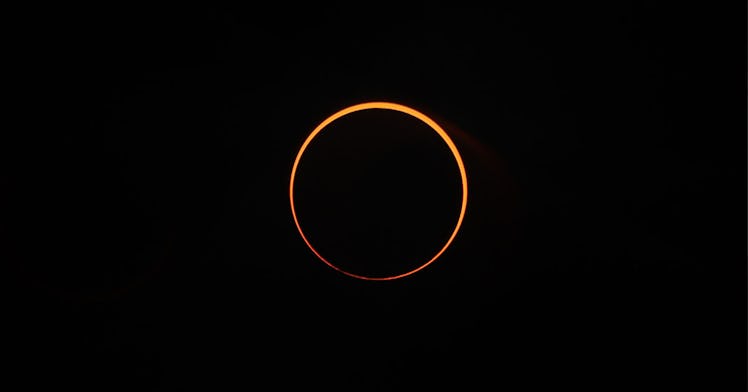You Will Not Want to Miss This ‘Ring of Fire’ Eclipse Coming This June
June is a great month for weird sky enthusiasts.

June is officially here, which, along with summer vacation and Father’s Day, means a brand new month of getting to see extremely cool and weird shit happen in the sky. And this is an especially exciting month for sky and stargazers, as June features a solar eclipse, along with the last supermoon of the year. Here is everything you need to know.
June 10: “Ring of Fire” Solar Eclipse
This is unquestionably the highlight of June, as the new moon will briefly pop in front of the sun to create the first solar eclipse of the year. It will not be a total solar eclipse, as the elliptical orbit of the earth means the moon will be too far away to completely cover the sun. This partial blocking creates an effect that is commonly called a “ring of fire,” as the outer rim of the sun will be visible despite most of it being blocked.
The annular eclipse will take place on the morning of June 10 at approximately 6:53 am EST. Unfortunately, the full “ring of fire” will only be visible in certain parts of northern Canada, Greenland, and Russia. However, a partial eclipse will still be visible for much of Europe, as well as the northern and eastern parts of the United States.
The next “ring of fire” won’t appear until 2023 so if you are able to see it, you are going to want to make it a priority. Just make sure you have proper eye protection, as looking directly at the sun causes eye damage, even during an eclipse.
June 24: The Last Supermoon of the Year
The other major sky event this month is the “Full Strawberry Moon” on the night of June 24. While it won’t be as bright as last month’s “Blood Moon,” it will be the final supermoon for all of 2021 so it’s an absolutely must-see stargazing event and you are going to want to plan accordingly. Fortunately, spotting it should be extremely easy, as all you need to do is go outside and look out into the sky to spot the moon, ideally in an area that does not feature too much artificial light.
A supermoon occurs when the moon is both full and at its perigee, which is the point in its orbit when it’s closest to Earth, meaning that you can expect the moon to look approximately 30 percent brighter and 14 percent larger than usual. Basically, the moon is going to be extremely big and extremely bright.